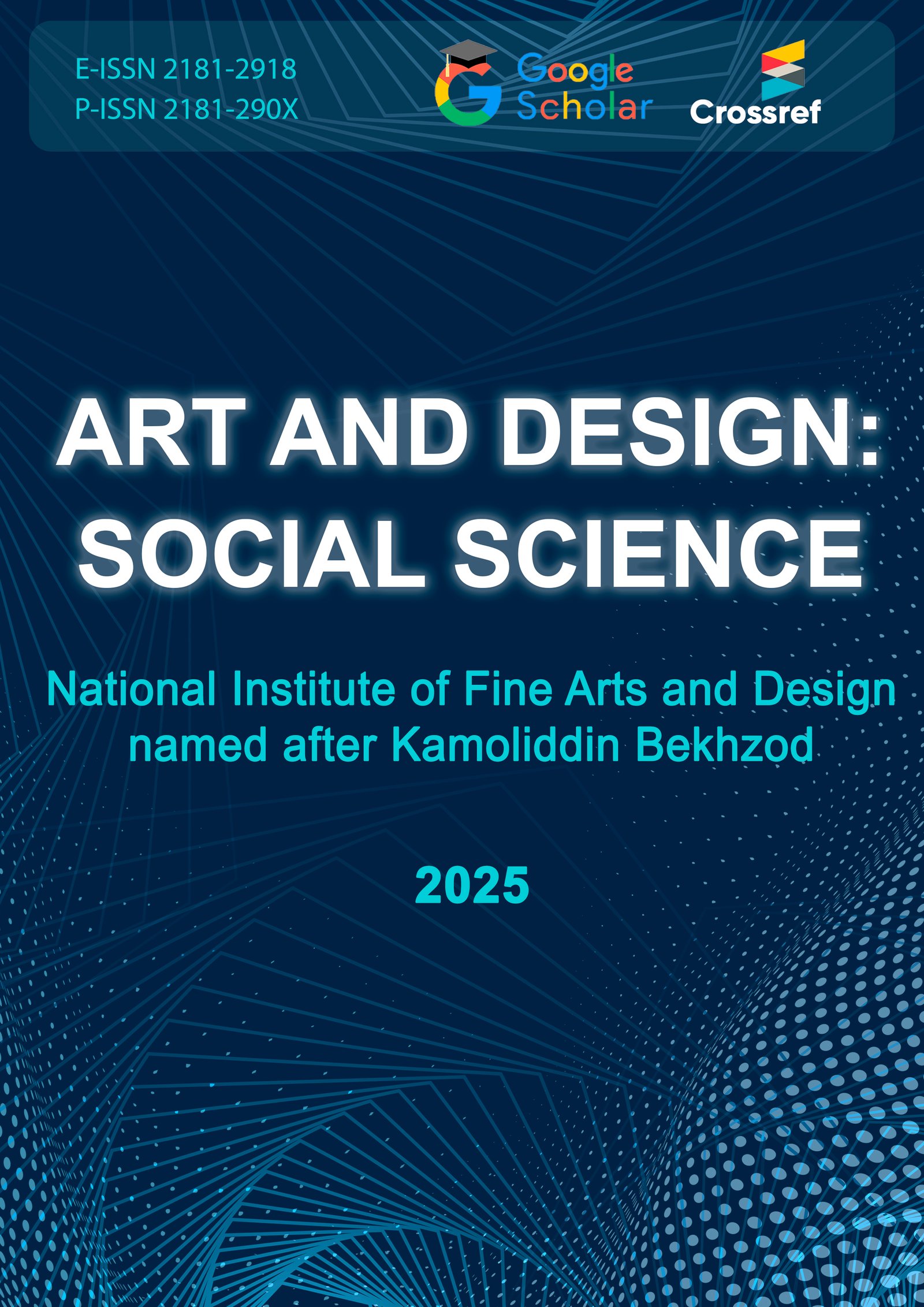ART SHOP AT MUSEUMS OF UZBEKISTAN
Abstract
Traditionally, museums perform the functions of collecting, storing and broadcasting cultural values to the public. Today we can talk about a new trend – the transformation of museums into cultural, historical and leisure centers, which makes it necessary to abandon the traditional approach to museum activities in the broad sense of this concept.
Museum management should now pay attention not only to the creation of exhibitions and exhibitions, but also to the work of recreational areas, leisure centers, infrastructure development. An important aspect is the work with the visitor, the organization of the process of his stay in the museum: today it is necessary to focus on finding new effective ways of interacting with the visitor to meet a wide range of intellectual and cultural and everyday needs of society.
Keywords
museum, the museum business, museum shopsHow to Cite
References
The Law of the Republic of Uzbekistan "On Museums" dated September 12, 2008 No. ZRU-177, the newspaper "Narodnoe Slovo" No. 181.
The Law "On Science and scientific activity" dated October 29, 2019.
Decree of the President of the Republic of Uzbekistan on the strategy of actions for the further development of the Republic of Uzbekistan dated February 7, 2017 No. UP-4947.
Decree of the President of the Republic of Uzbekistan "On measures to radically improve the system of spiritual and educational work" - Tashkent, 26.03.2021.
Volkovich A.Yu. The model of museum communication in the concept of foreign museologists. //Museum in Modern Culture. - St. Petersburg, 1997.
I.Ilalov Museology – T: "Musika", 2006.
Korpusenko O. Integration of the museum store into the marketing concept of museums // kizhi.karelia.ru
Lord B., Gail D., Management in the museum business. 2002..Logos.//Lord Barry, Lord Gayle D. Management in museum business. - M.: Economics, 2002.
Miles R., Ranyard S. How a museum should take care of a visitor // Museums. Marketing. Management. M., 2001.
Zero L.Ya. Museum shop on the Internet // Museum of the future: information management. – M., 2001. - pp. 98-99.
Fedorov N.F. Museum, its meaning and purpose // Fedorov N.F. Soch. in 6 volumes. M., 1982.
Yureneva.T.Y. Museology. Moscow: Academic Project, 2003.
Bennett, T. (2015). Thinking (with) Museums: From Exhibitionary Complex to Governmental Assemblage. In A. Witcomb, & K. Message (Eds.), The International Handbooks of Museum Studies: Museum Theory (pp. 3–20). Chichester, West Sussex: Wiley/Blackwell.
Black, G. (2012). Transforming Museums in the Twenty-first Century. London & New York: Routledge.
Borg-Barthet, J., & Lyons, C. (2016). The European Union Migration Crisis. Edinburgh Law Review, 20(2), 230–235.
Cameron, D. F. (1971). The Museum, a Temple or the Forum. Curator: The Museum Journal, 14(1), 11–14.
Chuvilova, I., & Shelegina, O. (2015). The Museum’s Mission in the Modern Society and Problems of Museum Communication (With a Focus on Russia). ICOFOM Study Series, 45b, 303–313.
Coelsch-Foisner, S. (2012). The Museal Turn: Introduction to a New Concept in Cultural Studies. In S. Coelsch-Foisner, & D. Brown (Eds.), The Museal Turn (pp. 11–16). Heidelberg, Germany: Universitätsverlag Winter.
Desvallées, A., & Mairesse, F. (Eds.) (2010). Key Concepts of Museology, International Council of Museums. Paris: Armand Colin.
Gnedovsky, M. (1997). Modernizacija muzejnogo dela v Rossii [Modernization of Russian museums]. In N. Nikishin (Ed.), Muzej i demokratija (pp. 7-20). Moscow: Rossijskij institut kul'turologii.
Gourievidis, L. (Ed.). (2014). Museums and Migration: History, Memory and Politics. London and New York: Routledge.
Gray, C. (2015). The Politics of Museums. London: Palgrave Macmillan.
License
Copyright (c) 2022 Shakhzod L. BAKHODIROV

This work is licensed under a Creative Commons Attribution 4.0 International License.




 Art and Design: Social Science
Art and Design: Social Science